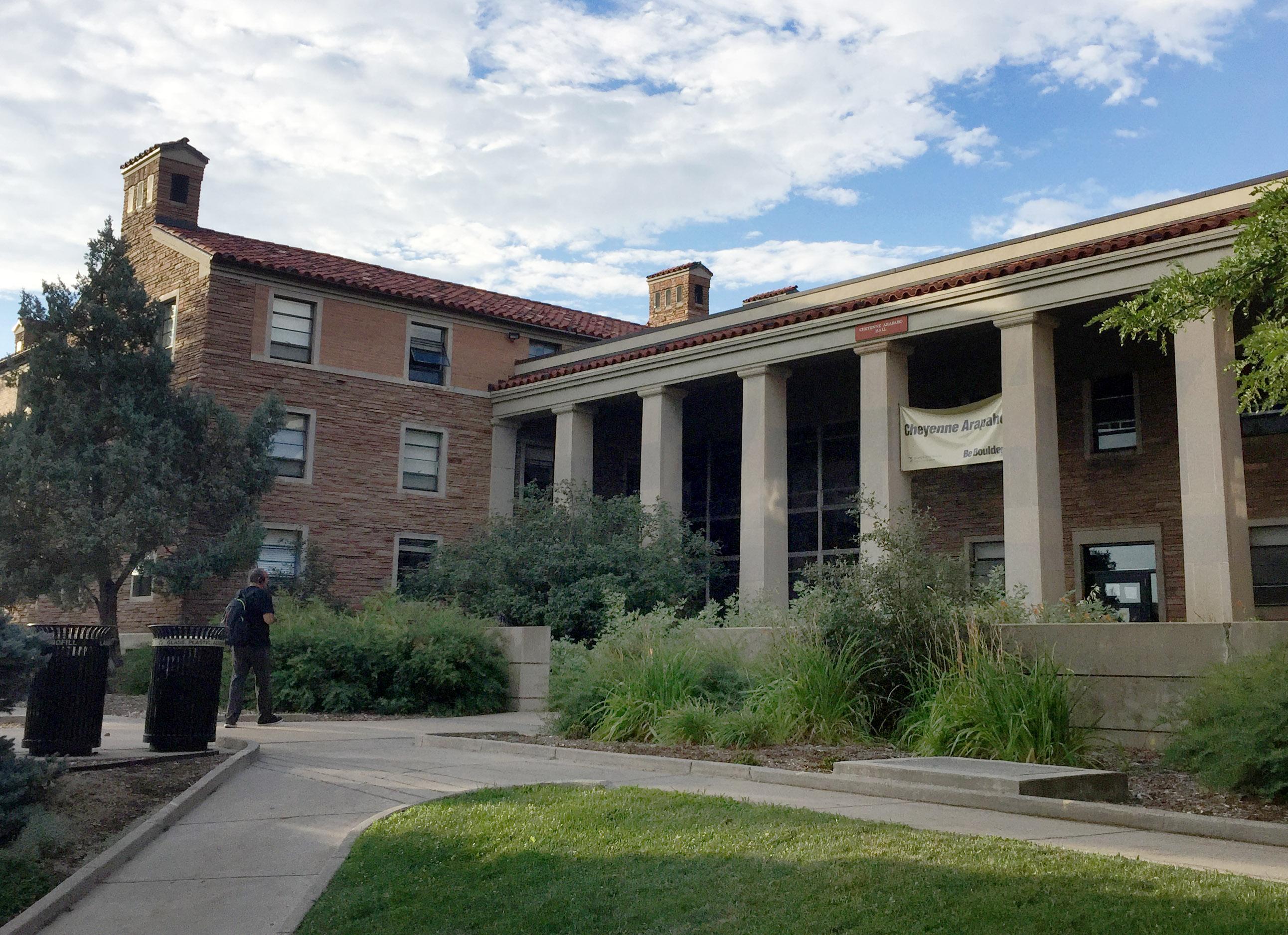
It's not just statues of Confederate leaders that lead to debates over controversial figures in U.S. history.
Buildings on college campuses across the country bear the names of men who were members of the Ku Klux Klan, were openly racist or, in Colorado's case, participated in the killing of American Indians.
State Historian and University of Colorado Boulder history professor Patty Limerick tells Colorado Matters about a debate several decades ago over Nichols Hall, a college dorm on the Boulder campus.
David Nichols was a Boulder County Sheriff, and later Speaker of the House in Colorado's Territorial Legislature, who was credited with getting matching funds to build the university. But Nichols also participated in the 1864 Sand Creek Massacre where at least 150 American Indians — mostly women and children — were slaughtered. Gov. John Hickenlooper officially apologized for the massacre in 2014.
The dorm, named after Nichols in 1961, led to protests in the 1980's where students demanded the name be removed. Limerick later wrote about the controversy in 1987, calling into question Nichols' role in helping to establish the Boulder campus.
"Folklore, by 20 years afterward, had recorded this notion that Nichols had gotten on his horse on a cold winter night, ridden 26 miles from Denver to Boulder, gotten a commitment of land and support for the university and ridden back," Limerick said. "There's no evidence [from] the time that he did that."
She also pointed out the complexities of memorials and buildings named after historical figures. Limerick concluded her paper by arguing for a change in the name of the dorm.
Two years later, Nichols Hall was renamed Cheyenne Arapaho Hall. But Limerick pointed out the decision to change a name or remove a statue is a complicated one and shouldn't be taken lightly.
She also agrees with President Donald Trump's comment where he suggested that removing memorials and tributes could be a slippery slope.
"I wonder; is it George Washington next week, and is it Thomas Jefferson the week after?" Trump said, pointing out that they were both slave owners. "You know, you really do have to ask yourself, where does it stop?"
Limerick though, sees some differences between Lee and the two Founding Fathers.
"They tried to create a nation that had high ideals," Limerick said. "Robert E. Lee tried to take that nation down."
Limerick is concerned that removing controversial historical monuments and renaming buildings could have the effect of erasing shameful aspects of U.S. history that should be understood and debated.
"The opportunity is vast for us to think about our past, our present, and the connection between those — and how we ourselves are living," Limerick said.








